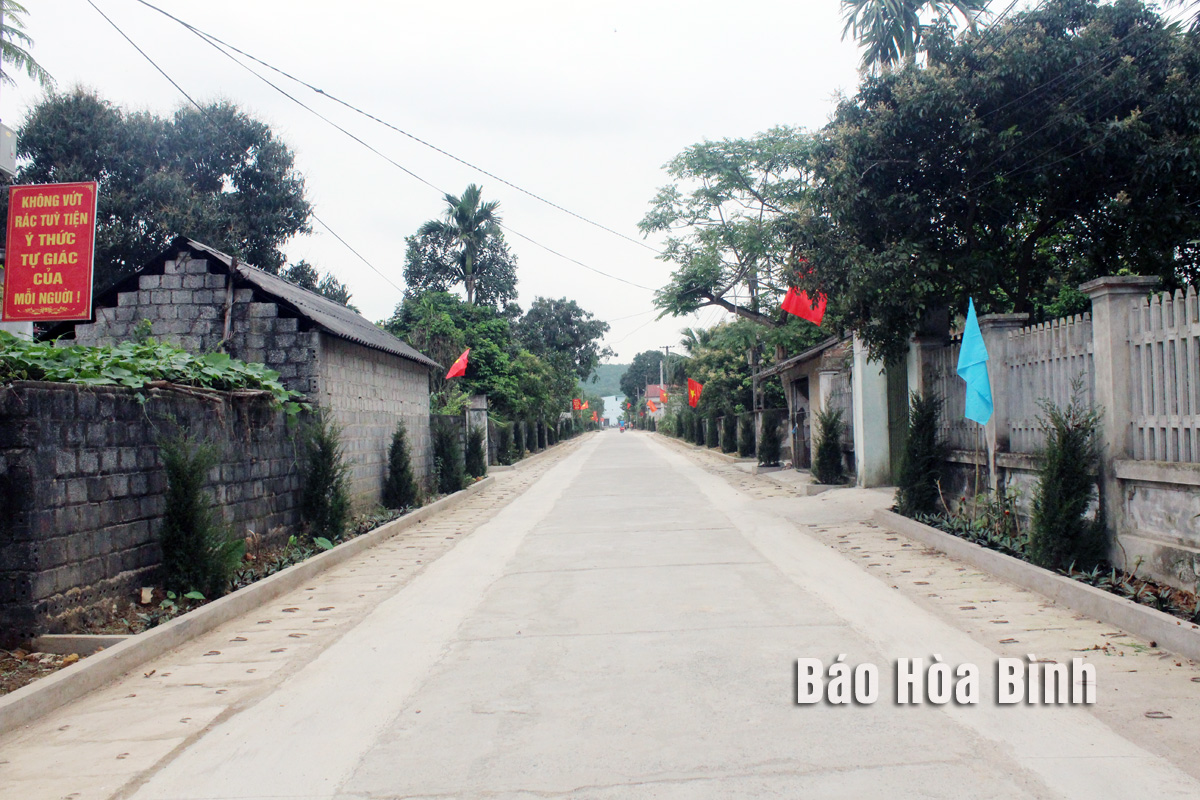
The Hoa Binh People's Committee on January 8 issued Plan No. 02/KH-UBND outlining the local implementation of the national target programme for new-style rural development for 2024.

Thanks to resources mobilised, roads of Tan Tien hamlet in Dong
Tam commune, Lac Thuy district, have been concretised and expanded.
The plan sets forth ambitious objectives, aiming to achieve
the recognition of six, two, and one additional communes meeting the normal,
advanced, and model standards for new-style rural building, respectively. The
average new-style rural criteria are set at 16.3 criteria per commune.
Additionally, the plan calls for the standardisation of over
16 One Commune, One Product (OCOP) items, each achieving a rating of three
stars or above. Emphasis will also be placed on completing essential
infrastructure projects, meeting the production and living requirements of
rural residents for transport, irrigation, electricity, domestic water supply,
schools, and health care. Other targets are to improve the quality of life for
rural inhabitants and establish multiple production models linked to stable
employment for the locals.
The total capital to be mobilised for the programme
implementation this year exceeds 2.9 trillion VND (118.51 million USD). The sum
includes 161.706 trillion VND sourced from the central budget, 214.445 trillion
VND from provincial and district budgets, and 2 trillion VND worth of credit
capital.
The provincial People's Committee has outlined 11 key tasks
and solutions to ensure the effective and quality execution of the programme.
Regarding Task Number 11, which focuses on diversifying and efficiently
utilising resources, the body has directed localities to proactively allocate a
portion of their resources from local budgets to support new-style rural
development efforts, with appropriate mechanisms devised to mobilise diverse
funding sources beyond the state budget.
Hoa Binh province is undergoing a dynamic transformation amid Vietnam’s national digital transition. Building on Poliburo’s Resolution No. 57-NQ/TW on breakthroughs in science, technology, innovation, and national digital transformation, the province has rolled out a wide range of practical action plans. A standout initiative is the "Digital Literacy for All” movement, an effort to ensure that no one is left behind in the digital era.
Hoa Binh province is undergoing a dynamic transformation in the wake of the national digital transformation movement. Building on Resolution No. 57-NQ/TW of the Politburo on breakthroughs in science, technology, innovation, and national digital transformation, the province has implemented a wide range of practical action plans. A standout initiative is the "Digital Literacy for All” movement ambitious effort to ensure that no one is left behind in the digital age.
With a spirit of unity and proactive problem-solving, the Party Committee, the government and the people of Dong Lai Commune (Tan Lac District) have made great strides in implementing the resolutions of the 24th Party Congress of the commune for the 2020 - 2025 term. Focusing on leadership and practical actions, the commune has brought the Party’s resolutions into daily life, creating strong impacts and pushing the local development forward.
Amid the nationwide push for digital transformation, young people in Hoa Binh Province are stepping up as dynamic pioneers, applying technology to enhance Youth Union operations and expand the reach of youth-led initiatives. Through creativity and adaptability, Youth Union organizations at all levels have introduced a series of practical solutions, contributing to modern governance and community development.
In recent years, An Nghia commune, located in Lac Son district, has stepped up administrative reform, focusing on improving the quality and efficiency of its single-window service unit for receiving and processing administrative procedures. These improvements have helped create favourable conditions for local residents and organisations to handle administrative procedures, contributing to the commune’s broader socio-economic development.
The Prime Minister-approved master plan to develop the multi-use value of forests ecosystems through 2030, with a vision to 2050, aims to improve the management and sustainable use of forest resources, create jobs, increase incomes, and improve the living standards of ethnic minorities, people in mountainous and remote areas, forest workers and those living near forests.



